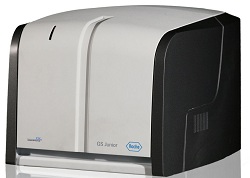THE POTENTIAL for genetic sequencing to play a part in the preservation of endangered animal species has long been recognised, and is now becoming reality.

GS Junior benchtop sequencer from Roche - looks like a toaster, destined to help save animal species at Washington Zoo
Among the latest applications is the use of a GS Junior benchtop sequencing system from Roche Applied Science at the US National Zoo in Washington DC, for use in research on animal diseases and resistance, molecular ecology, and population genetics.
Installed at the Smithsonian Conservation Biology Institute (SCBI) genetics laboratory, the instrument exploits Roche’s next-generation technology for so-called ‘deep DNA’ sequencing of the subject animals.
A key part of the research is to examine some of the pathogens that threaten animal species, including the chytrid fungus that has devastated amphibian populations worldwide, the elephant endotheliotropic herpes virus (EEHV1), and avian malaria strains that are devastating native Hawaiian birds.
The GS Junior offers long sequencing read lengths of up to 400bp (base pairs) using the 454 sequencing technology, in a benchtop size instrument.
“Next-generation sequencing is remarkable”, said Rob Fleischer, head of SCBI’s Center for Conservation and Evolutionary Genetics. “The GS Junior system is perfectly sized for us, and the long read lengths are critical to our particular areas of focus in pathogen detection and viral/bacterial comparative genomics”.
